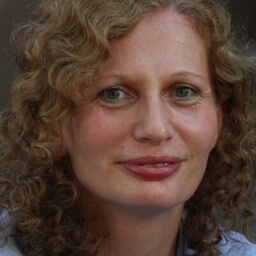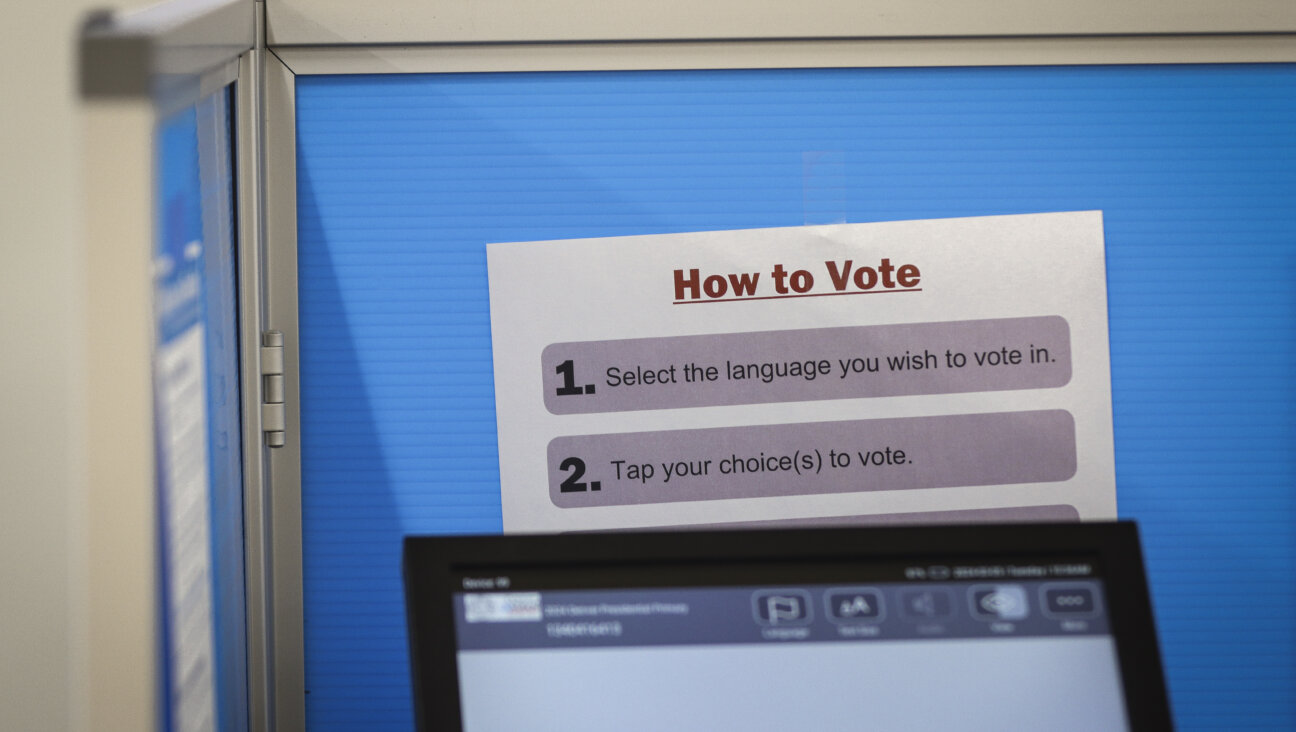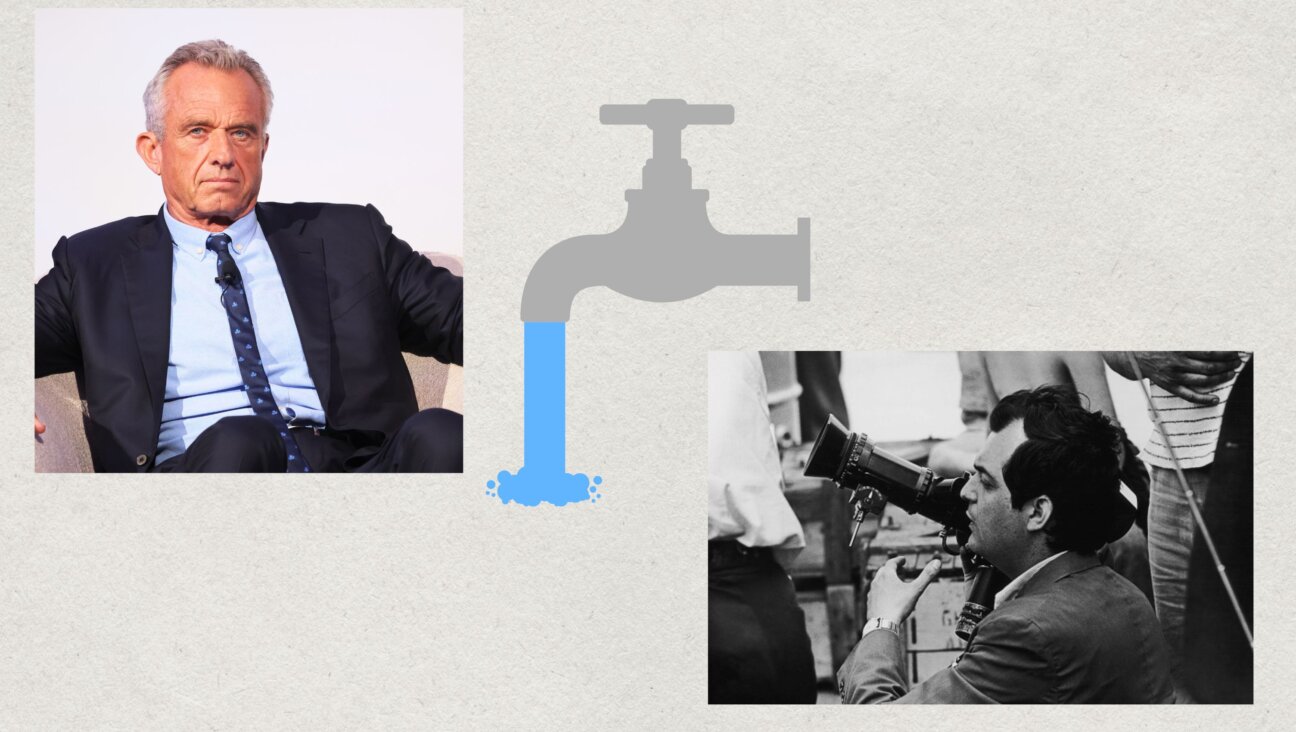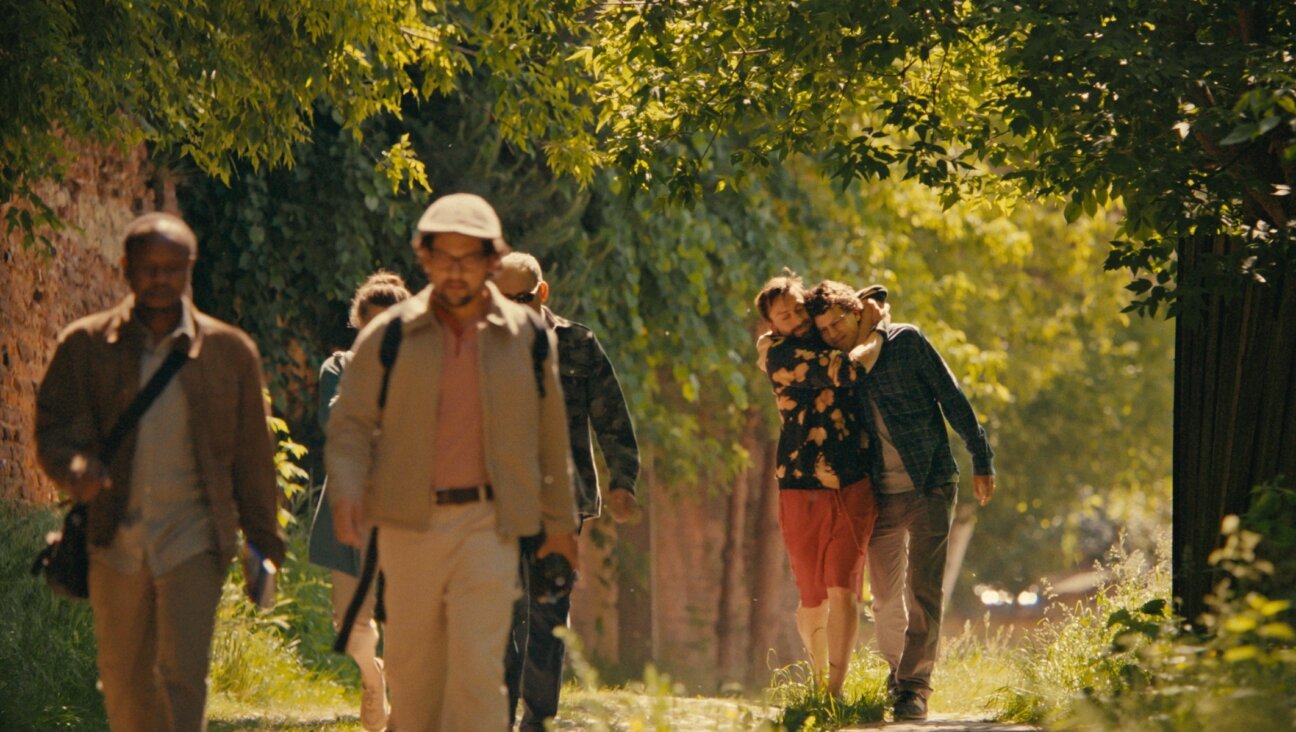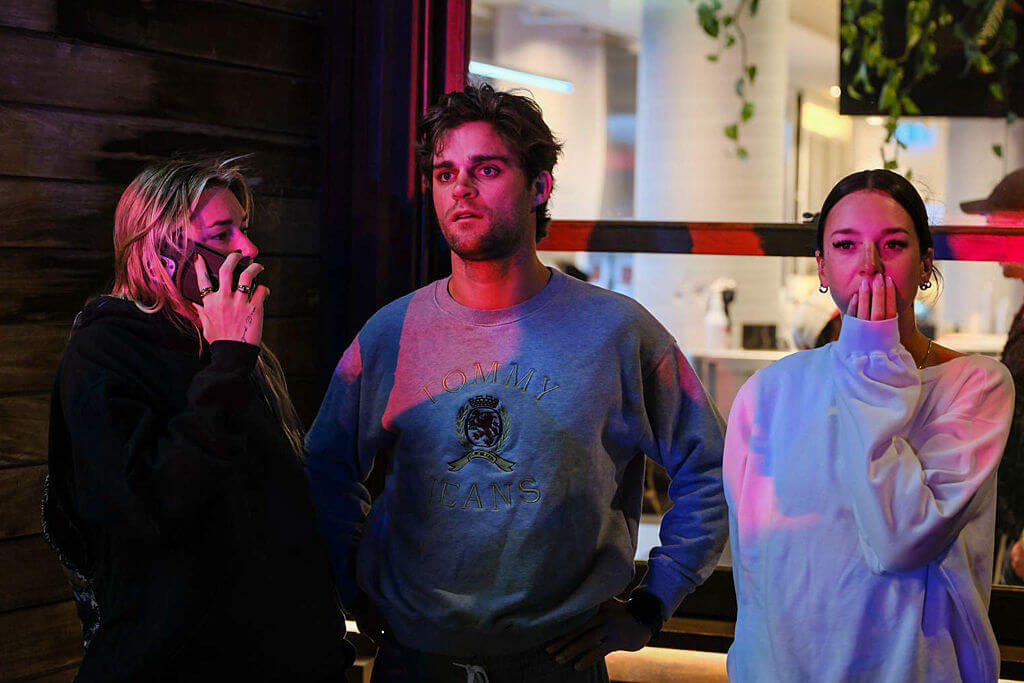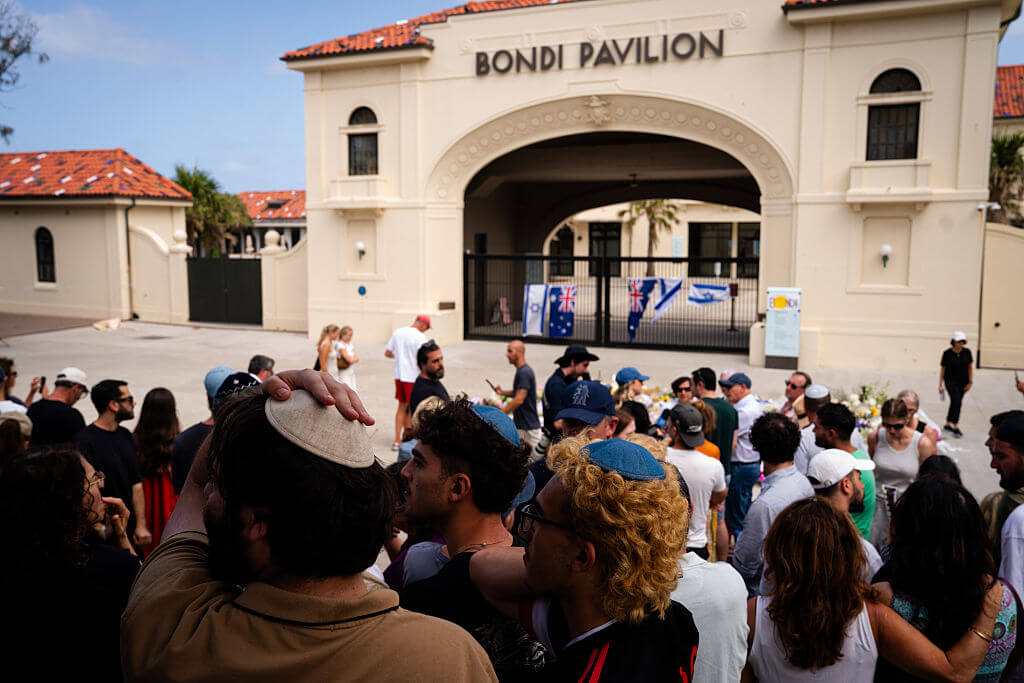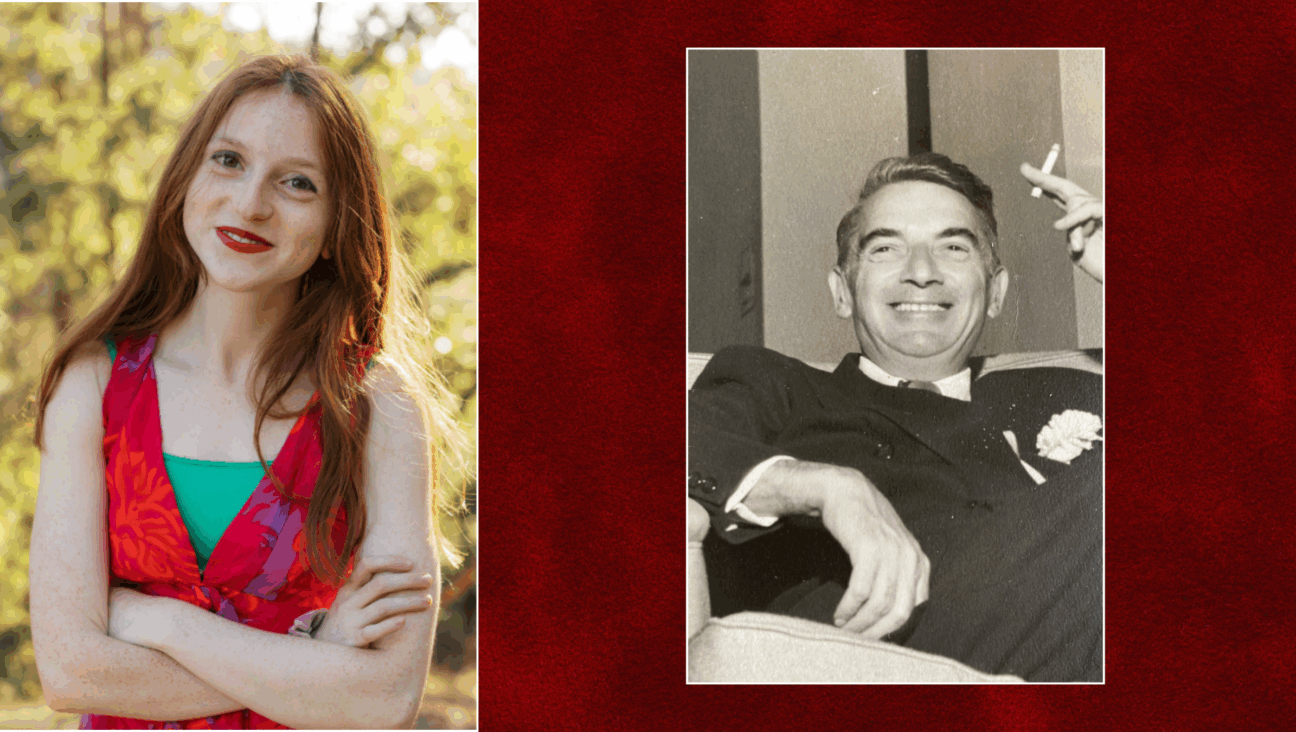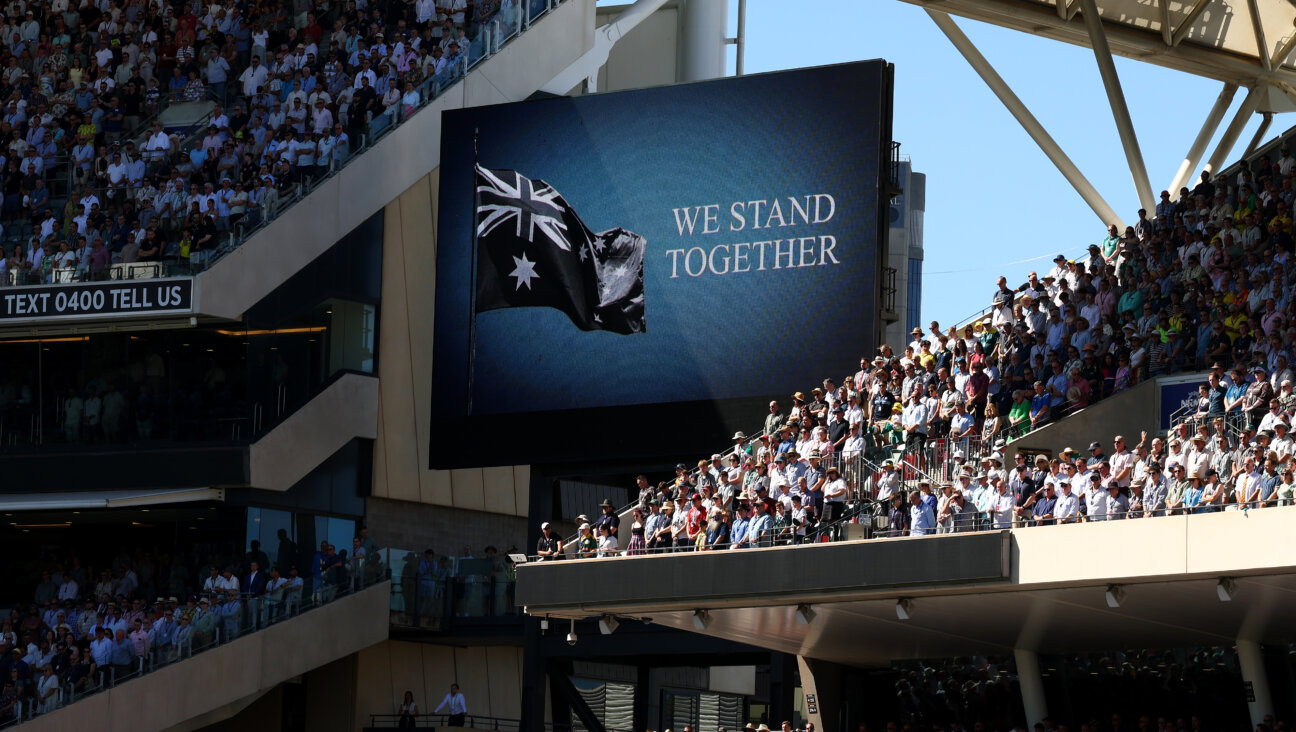The urban sukkah: In NYC, they’re on rooftops, terraces, sidewalks and more
No backyard? No problem! City-dwellers build huts for Sukkot wherever they can
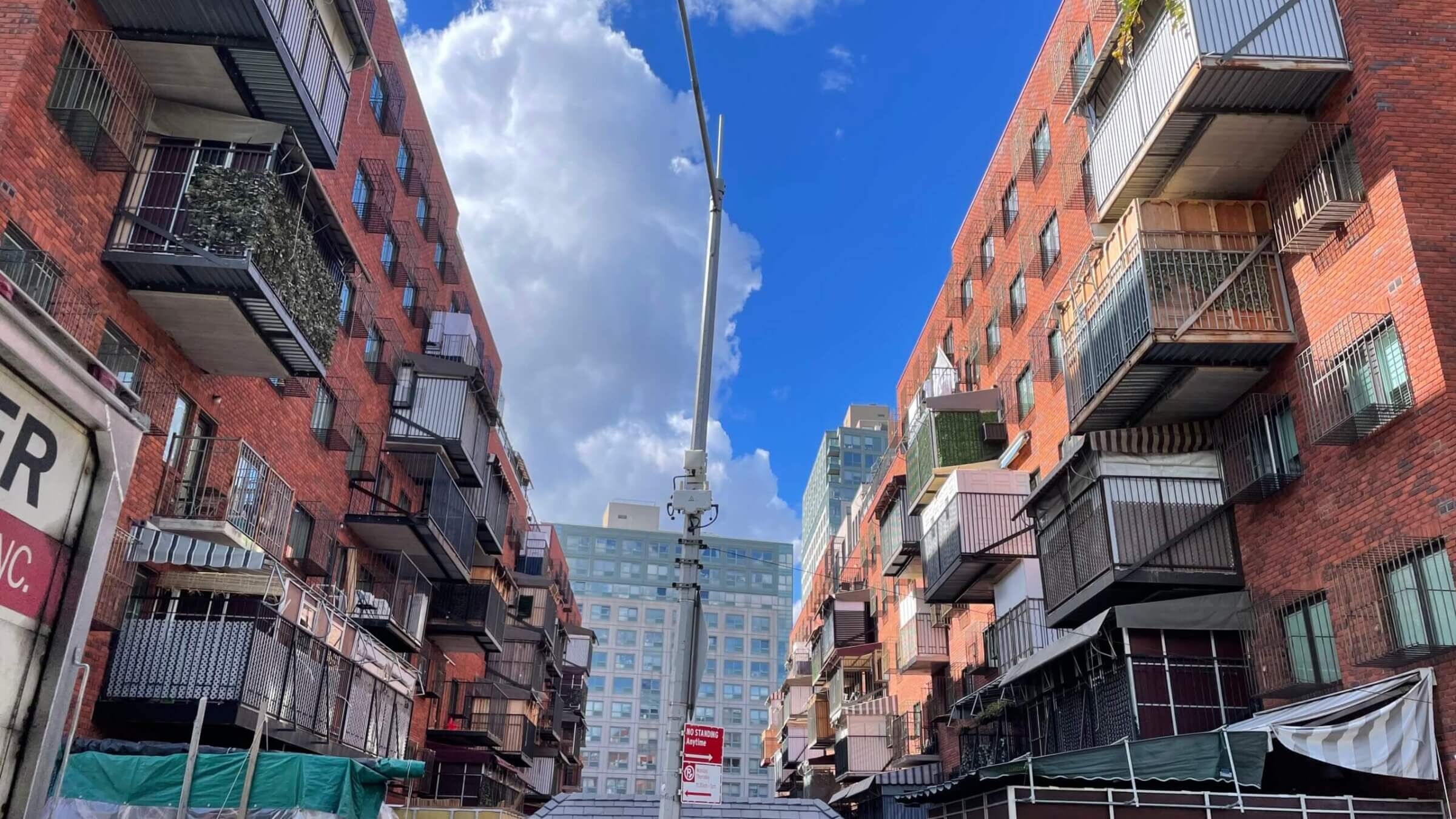
Sukkahs built on balconies arrayed in a zigzag pattern on building facades in Hasidic Williamsburg, Brooklyn. Photo by Beth Harpaz
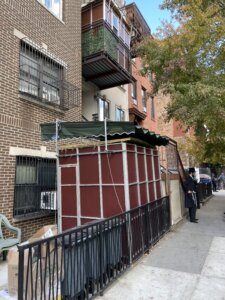
What’s a New Yorker to do when it’s time for Sukkot? Most city-dwellers don’t have backyards, so building a sukkah with the requisite three walls and exposure to the sky through a roof made of branches requires some clever hacks.
That’s why, walking around Jewish neighborhoods this time of year, you’ll find sukkahs taking up half the sidewalk, crammed into alleyways, and even built on fire escapes. There’s one in Brooklyn’s Prospect Park built by Congregation Beth Elohim, a Reform synagogue, and others built by Chabad outside the New York Public Library and in Madison Square Park in Manhattan.
Sukkahs also crowd the streets of Crown Heights, Brooklyn, near Lubavitcher headquarters, and they can be seen in other Orthodox Jewish neighborhoods like Brooklyn’s Borough Park and along Ocean Parkway.
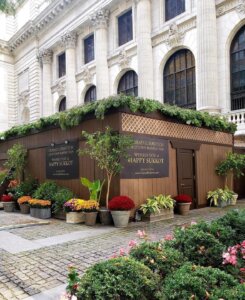
In the Hasidic section of Williamsburg, Brooklyn, buildings are designed with terraces staggered across the facade in a zigzag array, rather than stacked in a row on one side of the building, so that every balcony has a sky view.
In Manhattan’s rooftop sukkahs, skyscrapers and water towers can be glimpsed through the branches overhead. Elsewhere, New Yorkers must negotiate with landlords, neighbors and co-op boards (like the one in Only Murders in the Building) for permission to improvise something as simple as shower curtains hung on plastic pipes.
The holiday
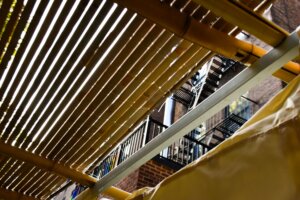
Sukkot is a weeklong festival celebrating the fall harvest. The sukkah, a temporary outdoor dwelling, commemorates the Israelites’ 40 years of wandering in the desert after escaping Egypt. Its roof must be made from natural materials, called schach, typically branches or reeds, and must offer both shade from the sun and a view of the sky.
Meals are traditionally eaten in the sukkah, and sometimes people sleep there, too — though New York City sukkahs, as exposed to the public as many of them are, do not for the most part get used overnight. Between pigeons, insects, rats and other living things, it’s neither appealing nor altogether safe.
Sukkah-hopping
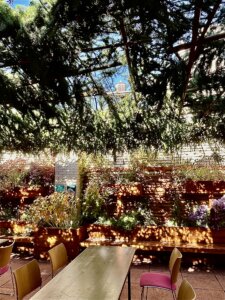
Haley Schulman grew up in suburban New Jersey, where her family always had a backyard sukkah. Living in an apartment on Manhattan’s Upper West Side, though, a backyard sukkah is not an option. That’s why she goes sukkah-hopping: “I find out what sukkahs are available to the public and I make arrangements with friends to meet up and go.”
Typically, these public sukkahs are located on rooftops and large terraces in buildings occupied by synagogues and other Jewish organizations, and often they’ll have online sign-ups for guests or open house nights. Some shuls organize meals for members, but “the culture of these shared sukkahs,” Schulman said, is “to make food at home, package it up and bring it with you. You could go on your own with a sandwich, or coordinate with friends to put together a whole Shabbat or holiday meal.”
The zigzag terraces of Williamsburg

On Frieda Vizel’s tours of Hasidic Williamsburg, she makes a point of calling attention to the many buildings with balconies arrayed in staggered patterns. “They design the buildings to ensure that every apartment has a balcony exposed to the sky,” she said. “There are 52 weeks in the year but it’s all for this one week.”
The holiday is “such a huge deal,” she added. “People decorate their sukkah and they want to be able to serve their meal on their best china in the sukkah with direct access from their apartments.”
While the roofs are usually made of bamboo, they’re often covered with awnings or tarps when not in use.
Rooftops on the Upper West Side
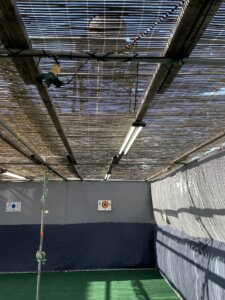
Manhattan Jewish Experience, an outreach organization geared to unaffiliated Jews in their 20s and 30s, builds a massive sukkah that seats 180 people on the 11th floor rooftop of an Upper West Side building. “It’s a beautiful view of Manhattan,” said founder Rabbi Mark Wildes. “To pray over Manhattan, there’s nothing like it.”
A few blocks away, Congregation B’nai Jeshurun hosts a sukkah lavishly decorated with colorful fresh flowers and tree boughs on the sixth floor of its building. From outdoor upper-floor sukkahs like theirs and the one at Manhattan Jewish Experience, you can often glimpse old wooden water towers and tall nearby buildings through the branches.
Students at Columbia
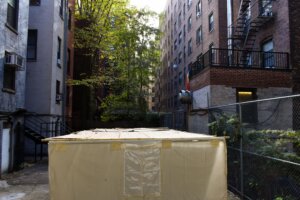
A little farther uptown, a sukkah built by Bayit, a Jewish food co-op that houses 30 Columbia University students and a communal kosher kitchen, draws crowds for joyful potluck suppers. “Shabbat dinner in the sukkah is super chaotic, but it’s a really nice chaos that exemplifies what living there is like,” said Bayit member Judy Goldstein.
The Bayit sukkah sits on a concrete patio in a backyard shared by a couple of frat houses and other buildings. Like most sukkahs, theirs is built anew each year from a reusable kit; since they don’t have a garage or attic, the kit gets stored the rest of the year under sofas in the living room.
A shower curtain, a sidewalk, a park
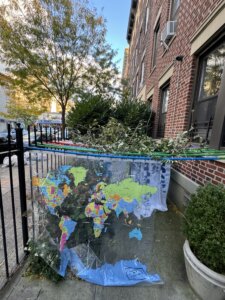
New York City co–op apartment buildings are notoriously finicky about all sorts of things, and putting up a sukkah is no exception. Harriet Roffe had to get permission from the board of her Brooklyn co-op to erect a makeshift sukkah between a fence and a windowsill in an outdoor area. To comply with stipulations listed by the board, the sukkah — made from plastic piping and shower curtains — could be no taller than 5 feet, so as not to interfere with anyone’s view out their window. The board said its lawyer also recommended that she get liability insurance, but she opted not to.
Simon Feil, who rents an apartment in Brooklyn’s Park Slope neighborhood, got permission from his landlord to set up a pop-up sukkah — billed as a “travel sukkah” by the company that manufactures it — on a concrete rectangle next to the building’s garbage bins. While the sukkah is too small for a sitdown meal, he and his family do kiddush and hamotzi in it, and Feil takes his morning tea there.
He also puts up signs explaining to passersby what it is; two years ago, the sukkah was vandalized by someone who left “some sort of bodily fluid in it,” but that won’t stop Feil. “I’m not going to not put it up out of fear,” he said. “I am more and more refusing to adjust my life in any way. I’m going to be in the world in the way I want to.”
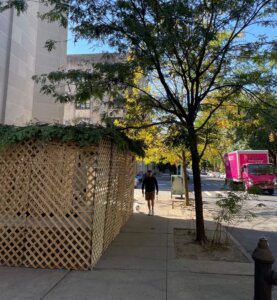
Congregation Beth Elohim, a Reform synagogue in Park Slope, builds a sukkah amid the trees of nearby Prospect Park. Every night, different groups gather in the sukkah to celebrate the holiday: LGBTQ+ members, interfaith families, Jews of color and multiracial families, Mizrahi and Sephardic members, and families holding a singalong-and-music jam, among others.
The synagogue also hosts a small sukkah on the sidewalk outside its building on a busy avenue with lots of traffic. “Sometimes you hear a loud truck rumble by, and we’ve had times in our Sukkot morning service where we hear honking or an ambulance siren,” said Rabbi Rachel Timoner.
On the other hand, Timoner said, it’s nice “to be so much in the middle of things,” with folks stopping by on their way to school or work to ask what the sukkah’s all about: “People get a big smile on their face and they’re totally delighted to experience this aspect of Judaism that’s not necessarily something everyone is familiar with.”
